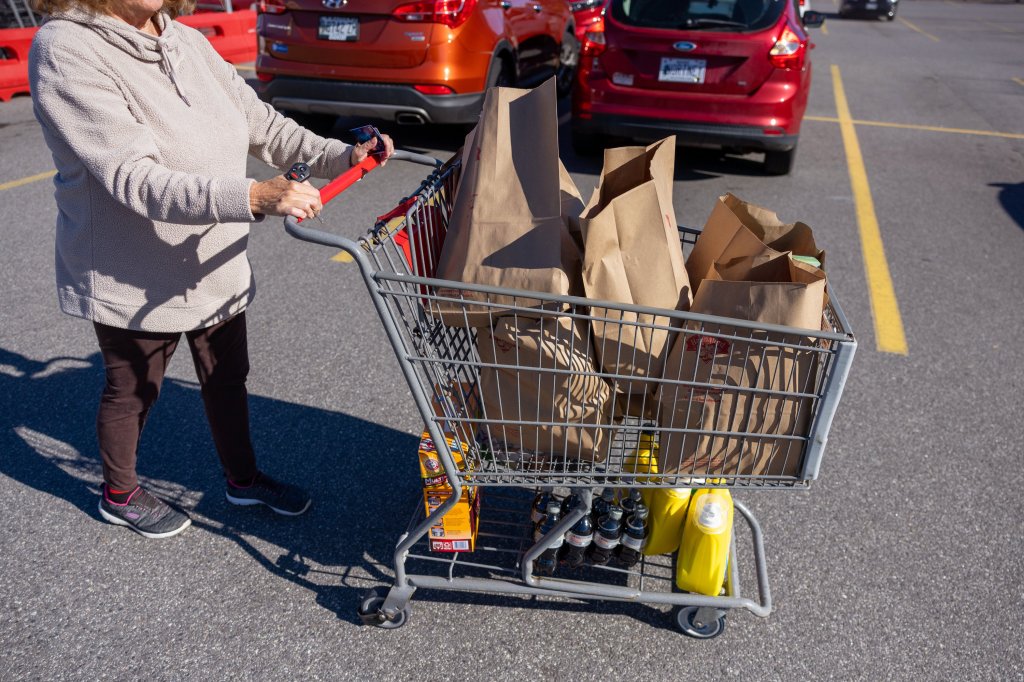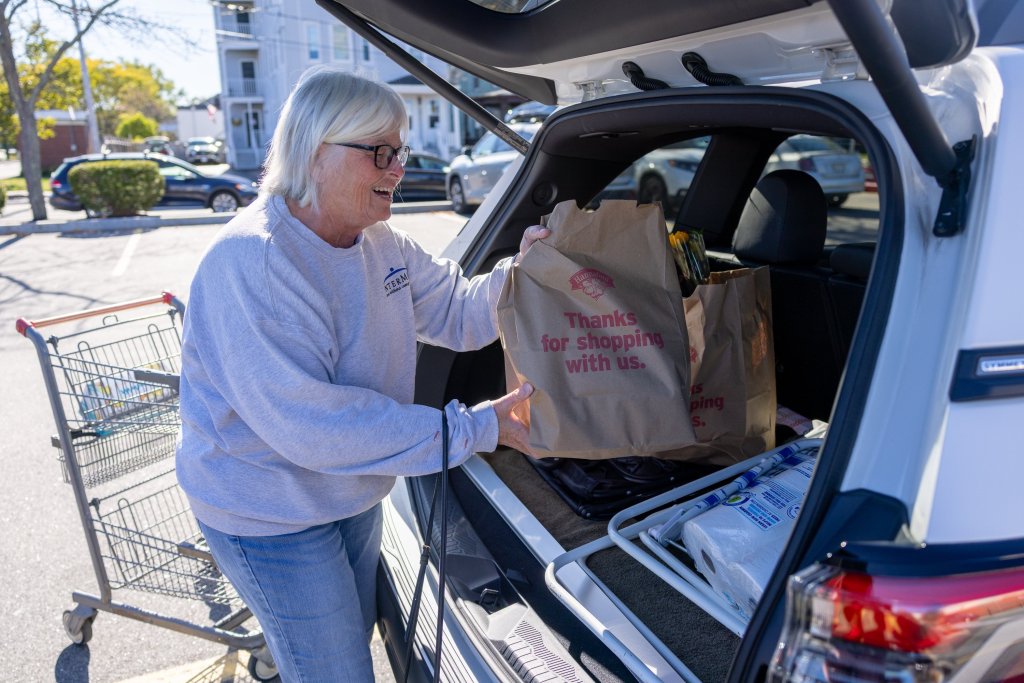
On a recent trip to Hannaford, Lesley Berry had her shopping list carefully planned out before entering the store.
For weeks, the 36-year-old Westbrook resident has used the grocery chain’s app to select the best deals and calculate a total. She sticks to store-brand products, searches for sales and leaves little luxuries — like gum for her 7-year-old son — on the shelf. So when a stranger paid for nearly her entire cart and left before she could thank them, Berry was overwhelmed.
“We’ve not really been able to afford much lately,” she said in a TikTok video recounting the moment. She spoke through tears. “I just wanted to say thank you from the bottom of my heart. You have no idea what you just did.”

In a few days, the short clip had amassed more than 18,000 views and spurred conversations on neighborhood Facebook groups.
“Obviously, that video touched a lot of people,” Berry said during a phone interview. “Groceries always have been a sore spot, I think for every single person ever. And the grocery prices, I do think, have risen.”
Inflation has hit the Northeast especially hard in the last year, with overall prices in the region increasing by about 3.3%, outpacing the national average of 2.9%, according to the latest available data from the U.S. Bureau of Labor Statistics.
While that’s mostly driven by housing and energy costs, grocery prices are up 2.6% compared to last August, and the prices are growing more quickly than for categories like recreation, transportation and apparel, all of which were also up since last year.
To cope, some Mainers are tightening their budgets by cutting coupons or simply cutting back. Shoppers said they were buying more generic-brand items, eating out less and scaling back on unnecessary expenses like travel, entertainment and children’s toys.
As he unloaded a cart’s worth of groceries in the Costco parking lot in Scarborough on Saturday, Bath resident Travis Whitlock said he’s noticed prices climbing over the last six months to a year.
While that has not caused him to hold back on groceries and other household necessities, Whitlock said it has meant more frequent trips to the bulk retailer — about 40 miles from home — and attempts to cut nonessential expenses.
“We’ve been visiting the big box stores (like) Costco a lot more, trying to do bulk,” Whitlock said. “(One) place we’ve cut back is travel. … We don’t eat out as much as we used to.”
Linda Blucher said she plans her menu ahead of time, before hitting the grocery store, and watches more closely for sales than she used to. At 72, she works a part-time job two days per week, using that income to fund activities and time with her grandchildren.
“Without the job I would only be able to pay for my bills,” she said.

THRIFTING THROUGH IT
Some are flocking to secondhand stores to keep costs down. About half of American consumers have recently made a secondhand purchase, according to a recent survey by Morning Consult. Among those shoppers, two-thirds said saving money is a key motivator, while one-third reported recent tariffs pushing them to buy secondhand more often.
Regular shoppers walking out of Goodwill in South Portland on Thursday afternoon said the store, like many thrifts, has felt busier in the last few months.
“I’m going to guess people are hurting financially. I think that’s part of it,” said 55-year-old Scott Segal. “I definitely am pinching my pennies.”

For Segal, that means buying fewer groceries and making sure to eat them before letting anything go to waste.
Lynn Stevenson walked out of Lots for Tots, a secondhand children’s store in Scarborough, late Saturday morning. The 64-year-old carried a bundle of toys in one hand and clutched her 2-year-old granddaughter’s hand in the other. Stevenson was watching the young girl for a week, which meant stocking up on snacks and toddler-friendly meals.
“Now I know why my daughter and son-in-law’s grocery bill is so high,” she said.
Stevenson and her husband are a few months from retirement, and she checks her 401k daily. With prices rising and talk of a potential recession looming, the pair may cancel already planned winter trips, aiming instead for the spring, she said.
“It’s definitely changing how we spend,” she said. “But we’re at a different financial point in our life. I feel really bad for young families that are trying to raise kids, and buy groceries, and fuel and all that stuff.”
Jennifer Bernazzani, a single mother of two teenagers and a 4-year-old, followed Stevenson out of the store a few minutes later. The 38-year-old is out of work after a surgery and currently pursuing her associate’s degree through the state’s Higher Opportunity for Pathways to Employment program, so she watches the bottom-line closely.
With grocery and housing prices rising, Bernazzani said she is always looking for places to cut costs. Often, away-from-home activities are the first to go.
“Road trips and lake days are costly,” she said. “Simple things. You used to be able to do simple things without it being, you know, expensive. It’s kind of sad.”
Staff Photographer Brianna Soukup contributed reporting.

We invite you to add your comments. We encourage a thoughtful exchange of ideas and information on this website. By joining the conversation, you are agreeing to our commenting policy and terms of use. More information is found on our FAQs. You can modify your screen name here.
Comments are managed by our staff during regular business hours Monday through Friday as well as limited hours on Saturday and Sunday. Comments held for moderation outside of those hours may take longer to approve.
Join the Conversation
Please sign into your CentralMaine.com account to participate in conversations below. If you do not have an account, you can register or subscribe. Questions? Please see our FAQs.